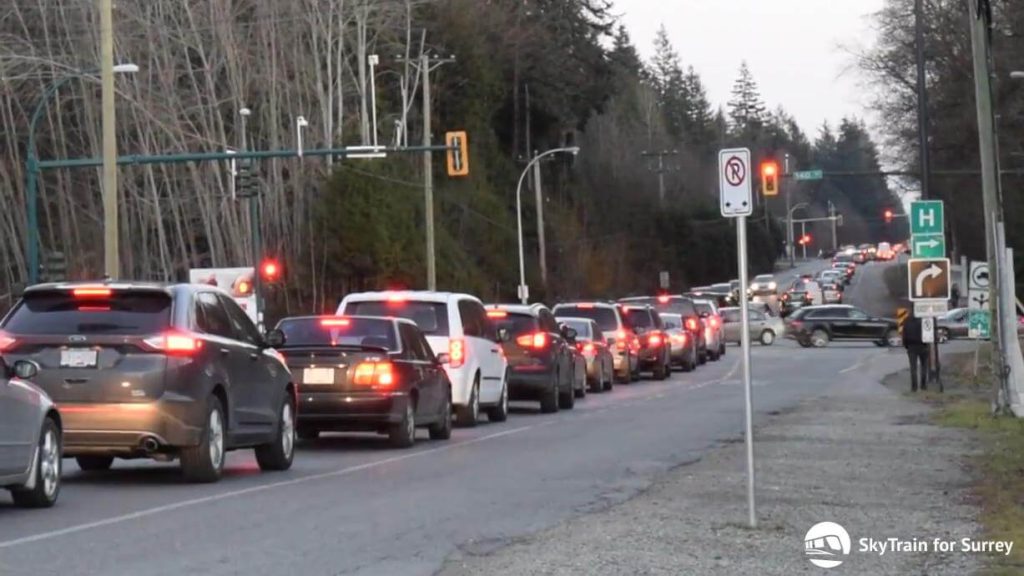DEBUNKING MYTHS
Interurban rail advocates out of touch with facts, people
FOR IMMEDIATE RELEASE – June 15, 2019 – Surrey, BC
In the last few months, an advocacy group for a hydrogen rail system on the former BCER interurban has made clear their position against SkyTrain expansion and against the Surrey-Langley SkyTrain project. In response, SkyTrain for Surrey has reviewed various proposals, media issues and statements released by this group and those associated—finding that they are out of touch with both the facts and the public, as there are numerous inaccuracies with the group’s published statements.
Many of these inaccuracies are on top of those pointed out by TransLink in a recent report, which noted that light rail on the interurban corridor would be slow, expensive and ultimately infeasible—and would not replace a Surrey-Langley SkyTrain.
Debunking Interurban Rail MYTHS

Below is our extensive review of published claims and statements by interurban rail advocates—and their inaccuracies.
MYTH: Interurban rail would cost significantly less than SkyTrain at $12.5 million per kilometre.
A detailed summary sheet released by the group notes that this estimate is “Based on 2010 Leewood projected cost plus inflation”, referring to a 2010 independent report on the interurban by Leewood Projects. This small U.K.-based firm has had experience advising on various U.K.-based projects, but it does not have any other consultation experience in North America, and so we seriously doubt the accuracy of this report
But, an arguably bigger concern is that several additional costs have been hidden by the group, behind your backs. As an example, although a group representative claimed to news media that this estimate includes costs for park-and-rides and the land acquisition required at stations, the Leewood report does not actually include these costs, according to the attached pricing schedule.
More examples of costs that were not accounted for in this estimate include:
- Bus exchanges at stations and associated land costs
- Higher costs of hydrogen trains (over more widely-produced diesel or electrified trains)
- Costs to accommodate hydrogen propulsion technology (i.e. fuel stations, transportation of hydrogen fuel)
- Contingency costs in project budget
- Inflation during construction
- Provisions to accommodate service expansion beyond base 20-minute headway in Leewood study
- Costs to manage or replace freight service during construction
- Costs of reorganizing bus routes to connect and time with rail service
- Ongoing operations and maintenance costs.
MYTH: Interurban trains would connect Scott Road Station and Chilliwack in just 90 minutes.
The original interurban schedule from the 1950s specified a 2.5 hour run time between Scott Road and Chilliwack.
We seriously doubt that any upgrades or redesigns of the interurban corridor—which in some places is extremely curvy and windy—could decrease total run times to 90 minutes (1.5 hours). Furthermore, interurban advocates have never explained this estimate of a 90-minute runtime.
MYTH: The interurban right-of-way is “free to use”.
From the original schedule, the Fraser Valley interurban was designed in the 1900s to handle a maximum of 3 interurban trains per direction per day. Today, the interurban is an active freight line, and this very limited capacity is likely completely occupied by freight services.
Significant construction and refurbishment is needed in order to handle modern commuter rail or ‘rapid transit’ service—with frequencies meeting 21st century demands in a highly developed Fraser Valley—while also accomodating existing freight uses. In addition, running passenger rail service is not free—there will be ongoing costs to operate (drive) and maintain the trains and infrastructure.
With these costs considered, we fail to see how the interurban corridor is in any way “free to use”.
MYTH: Interurban rail is a replacement for SkyTrain on Fraser Highway.
While the Fraser Valley interurban would offer connection between existing SkyTrain and Langley City, the route misses one of the biggest destinations for Langley City commuters (Surrey City Centre). Its terminus at Scott Road would mean Surrey to Langley commuters would have to backtrack the wrong way up the Expo Line to connect with interurban trains—taking up to 10 additional minutes, including transfer.

Furthermore, by not serving Fraser Highway, the interurban misses one of the busiest and most overcrowded bus corridors in the region. Fraser Highway carries 5 different bus routes (320, 345, 395, 502 and 503) across its length, and TransLink has noted that ridership growth on Fraser Highway is constrained by its current limited capacity.
MYTH: TransLink’s support numbers for Surrey-Langley SkyTrain are inaccurate
TransLink’s confirmation of strong support across the region for the Surrey-Langley SkyTrain comes from not one, but three different surveys (including two market research surveys) producing similar results.
This includes high support on a public consultation survey attracting more than 21,000 responses, the second largest public engagement turnout in TransLink history and the largest turnout ever for engagement on a specific project/area.
This also includes a previous market survey commissioned by the Mayors’ Council, finding the Surrey-Langley SkyTrain to be one of the most highly-supported transit projects in the region when compared against other proposals.
Read more:
- Surrey-Langley SkyTrain public engagement summary report
- Surrey-Langley SkyTrain market research report (Sentis)
- Mayors’ Council market research survey (Mussel Group)
MYTH: SkyTrain on Fraser Highway from Surrey to Langley is a waste of money.
While the most recent cost estimate for a Surrey-Langley SkyTrain line is approximately $2.9 billion, it’s important to consider that the estimate was stated in year-of-expenditure (2022) dollars. In addition, the estimate included: a very generous 25% contingency allowance applied to construction, design and management; and a 20% contingency on property; meaning contingencies accounted for over $700 million of the cost estimate.
In the 2012 Surrey rapid transit study, Surrey-Langley SkyTrain costs were assessed at approximately $1.8 billion in 2010 dollars (with a much smaller contingency portion). When this was assessed against potential benefits, the benefit-cost ratio of a SkyTrain + BRT system was 1.45:1.
In short, the value of this investment would be exceptional, as benefits generated by a Surrey-Langley SkyTrain would significantly exceed the costs.
MYTH: SkyTrain on Fraser Highway from Surrey to Langley will not solve Highway 1 gridlock.
Although congestion on the Highway 1 corridor is heavy, previous studies conducted by the provincial government found that the vast majority of work commutes in Fraser Valley cities like Abbotsford and Chilliwack do not actually leave those cities.
As such, we believe there is no single solution to solving Highway 1 gridlock, because it is just as driven by growing inter-regional and goods movement traffic as it would be by commuters coming from Abbotsford and Chiliwack.
However, SkyTrain’s potential to create a new urban centre in Langley, serving as a transfer point for Fraser Valley commuters, means that SkyTrain is a part of the solution to solve Highway 1 gridlock. It will provide important alternatives for Fraser Valley commuters on all modes, and help induce the necessary demand to prompt bus service improvements that address growing congestion and offer attractive alternatives to driving.
A long history of misleading the public
We would further like to note that this is not the first time that interurban rail advocates, in various different groups, have published factually incorrect information to support their cause.
Below is our timeline of action calling out misleading claims and statements by interurban rail advocates:
- Aug 2011: SkyTrain for Surrey founder Daryl Dela Cruz points out interurban rail would have limited impact in Surrey (letter to Surrey Leader)
- Jan 2012: TransLink completes interurban corridor assessment (attached appendix), pointing out numerous issues to use for passenger service
- Mar 2012: SkyTrain for Surrey points out that interurban rail cost estimates have been wrongly used by LRT advocates to describe cost estimates for street-running LRTs (which require reconstruction, utility relocation, etc.)
- Dec 2012: SkyTrain for Surrey calls out misinformation from South-of-Fraser based transit organization Rail for the Valley in a detailed response
- Jan 2013: SkyTrain for Surrey points out interurban advocates are misleading public on debt servicing costs
- Mar 2013: Interurban rail excluded from TransLink’s shortlisted Surrey rapid transit alternatives
- Apr 2013: SkyTrain for Surrey responds a second time to Malcolm Johnston from Rail for the Valley
- Jul 2013: SkyTrain for Surrey founder Daryl Dela Cruz points out that interurban only ran 3 times daily, success was driven by relative expense of owning an automobile in the 1910s-30s (letter to Surrey Leader)
- Apr 2015: SkyTrain for Surrey founder Daryl Dela Cruz points out that dwindling interest in interurban rail has resulted in an advocacy group Rail for the Valley’s effective reduction to a single blog contributor
- Oct 2015: SkyTrain for Surrey founder Daryl Dela Cruz calls out total lack of participation by members of Rail for the Valley and others associated in BC Transit’s public engagement reports for Reports for the Fraser Valley Express, Abbotsford-Mission (CFVT) Transit Future Plan and the Abbotsford-Mission (CFVT) Efficiency Review.
- Nov 2015: SkyTrain for Surrey challenges “SkyTrain is outdated” news report on Global BC, commissioned by interurban advocates, in a detailed response
- Apr 2016: SkyTrain for Surrey founder Daryl Dela Cruz points out that light rail mindset may have stagnated other transit developments such as rapid buses to the Fraser Valley (letter – Chilliwack Times [PDF])
- July 2016: Abbotsford Chamber of Commerce voices opposition to interurban rail, noting that development demand would put Agricultural Land Reserve (ALR) at risk
- June 2019: TransLink staff clarify (PDF) that light rail on interurban corridor is infeasible and not a replacement for the proposed Surrey-Langley SkyTrain

About SkyTrain for Surrey
SkyTrain for Surrey is the community organization that advocated for the Surrey-Langley SkyTrain extension, and continues to push for high-quality rapid transit projects in Surrey and Langley. We began as a petition calling for the scrapping of a street-level LRT proposal, which eventually amassed more than 6,000 signatures, and later contributed to making SkyTrain an election issue as a registered third-party advertiser. SkyTrain for Surrey continues to call for high-quality projects that offer a positive return-on-investment and recognize the rapidly increasing demand for transit.
Media Contact:
Daryl Dela Cruz – Founder, SkyTrain for Surrey
Phone: +1 604 329 3529, [email protected]
Stay updated with the Surrey-Langley SkyTrain project team!
Be sure to subscribe to TransLink's their mailing list (on the contacts page of the Surrey-Langley SkyTrain website) for official project updates! There is also now an official project email to get in touch with the planning team: [email protected].

